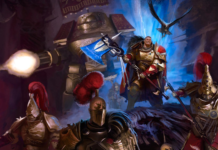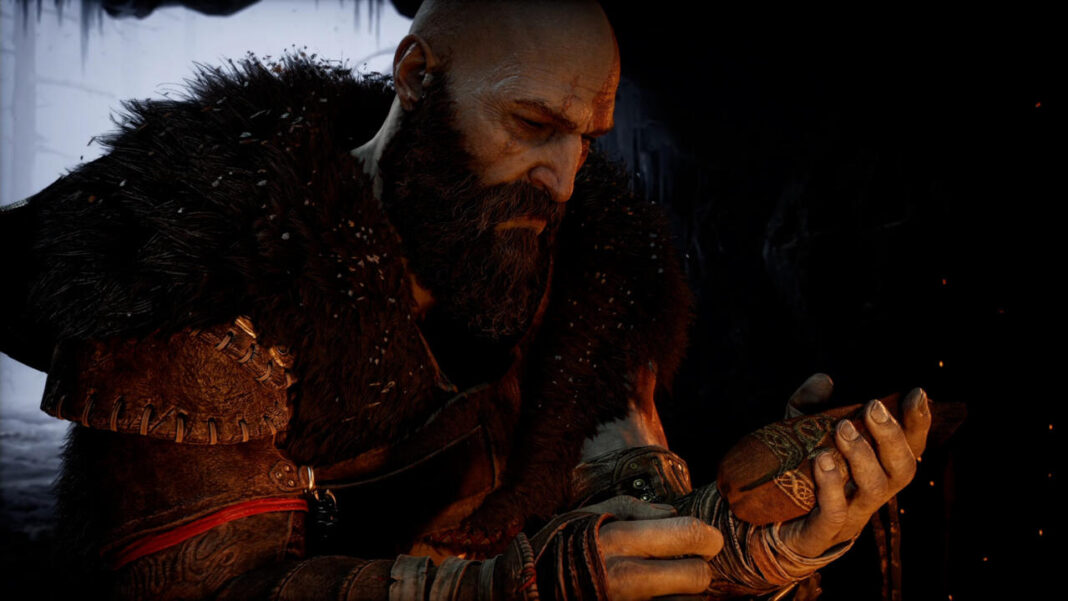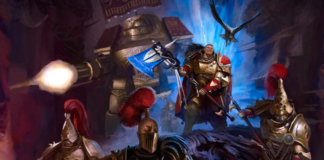Spoilers ahead for God of War and God of War Ragnarok
“Baldur is blessed with invulnerability to all threats, physical or magical,” Mimir explains to Kratos and his son Atreus in 2018’s God of War. Yet as soon as Sindri, the dwarven blacksmith, gave a bundle of mistletoe arrows to the young god, I knew Baldur’s fate was sealed.
I’m not an expert on Norse mythology, but the fables of Odin, Thor, the giants, and Vanir are something I’ve had an interest in for a number of years now. I know the broad strokes surrounding Ragnarok and some of the smaller myths, ranging from the story of Thor creating the tides after being tricked into drinking the ocean, to the tale of the construction of Asgard’s walls–which ends with Loki being impregnated by a horse, incidentally. While some players were wondering how Kratos was ever going to stop an unkillable god, I knew the answer was already sitting right in front of us, neatly docked on Atreus’ quiver. The exact details of Baldur’s eventual demise may differ in God of War compared to the Norse mythology it pulls from, but mistletoe–and by extension, Atreus–still play a crucial role in the death of its fearsome antagonist.
Most of what we know about Norse myth comes from the Poetic Edda and the Prose Edda, two Old Norse texts from the 13th century. I’ve briefly explored both, but most of my knowledge of these old pagan tales comes from Neil Gaiman’s Norse Mythology, an excellent book that retells many of the Norse myths while making them palatable for a modern audience. Because of this, God of War didn’t throw too many curveballs my way apart from one major exception. The final reveal that Atreus is in fact Loki was a fairly shocking one, not least because it introduced some issues regarding the timeline of events. For the most part, however, God of War sticks fairly closely to the mythology it’s pulling from, only notably deviating when it comes to its depiction of certain characters and their prominence in the story. Oh, and there isn’t usually an angry Greek god, either.
Going into God of War Ragnarok, I was expecting more of the same–more subtle spins on otherwise well-established mythos. I couldn’t have been more wrong. For all the praise I could lavish on so many different aspects of Santa Monica Studio’s spellbinding sequel, the one that stands out as most deserving is how often the game’s narrative toys with established knowledge of Norse mythology before subverting those expectations in fascinating ways.
Fenrir is one of the clearest examples. At the beginning of God of War Ragnarok, Fenrir, who is one of Atreus’ pet wolves, dies in the young boy’s arms just moments after we first meet him. This is a surprising turn of events considering Fenrir plays a pivotal role in the Norse myths, killing Odin by eating him whole during the world-ending events of Ragnarok. You see, Fenrir is one of Loki’s three children, the other two being Hel, the goddess of the underworld, and Jormungandr, the world serpent. It’s prophesied by the Aesir that all three will bring great misfortune upon the gods because of who their father is.
In Norse mythology, Loki is often depicted as a cunning trickster who operates as both a companion and enemy to the other gods. The same can be said of Atreus, though Santa Monica Studio somewhat redeems the mischief-maker by depicting him as someone capable of empathy and kindness as well. This crucial change in characterization is also reflected in Fenrir. When the wolf dies, Atreus inadvertently places Fenrir’s soul inside his knife, later transplanting it inside the body of the giant wolf, Garm. Fenrir might not be Loki’s son in the traditional sense, but Atreus resurrects him with this act and it’s not outlandish to consider him his creator. It’s a unique twist on the Norse myth that falls in line with God of War’s depiction of the young god. Rather than swallowing Odin whole during Ragnarok, Fenrir shows up to offer our heroes an escape–saving lives rather than ending them. He’s not the vengeful force he is in Norse mythology, and that’s partly because Atreus is a vastly different character to the original Loki, often deciding against violence as a first response.
Jormungandr’s role in God of War more closely resembles the Norse myth, as we see the giant snake square off against Thor during the battle of Ragnarok. However, the conclusion to their encounter–and the implications born from it–are much more interesting than the original tale. Seeing the moment from afar during the game’s large-scale finale is breathtaking; the world serpent looms over the horizon as he collides with the tiny speck of lightning that is Thor, crashing into the portal for Alfheim when he’s struck by a mighty blow from Thor’s hammer, Mjolnir. In Norse mythology, the world serpent and thunder-god are arch-enemies, prophesied to kill each other come Ragnarok. The legend states that Thor finishes off the serpent with a killing blow from his hammer, only to take nine steps forward before succumbing to the deadly poison Jormungandr has coated him in. In God of War Ragnarok, the fight ends when Thor hits the giant snake so hard that it splinters the world tree, Yggdrasil, and sends Jormungandr back in time to a period long before his birth–a prophecy that Mimir tells Kratos and Atreus about in 2018’s God of War.
The Jormungandr in that game–who finds Atreus oddly familiar when they first meet–is the same one who gets hit back in time by Thor. While this is happening, the present-day world serpent is hibernating beneath the ice in the Lake of Nine. He wasn’t born centuries ago, but rather when Atreus and Angrboda head to her grandmother’s house in Jotunheim, the realm of the giants. There, Atreus revives a large snake with a missing soul by giving it the soul of a giant, similar to how he transplants Fenrir’s soul into Garm’s body. Once again, Loki isn’t Jormungandr’s father in the traditional sense, but he uses his giant powers to give life to the world serpent. As Mimir posits, this also explains why Jormungandr has a personal vendetta against Thor before they even encounter one another. It’s very likely that the two clashed when the giant was still alive in its original body.
There are plenty of other examples where God of War Ragnarok subverted my expectations of Norse mythology, but those involving Atreus are the most fascinating. Loki is an integral character in the Old Norse texts and Atreus still fills that role, albeit in a vastly different way.
This reinterpretation of ancient mythology has always been a part of God of War’s DNA. It originated in Greece, pitting Kratos against Zeus and the rest of the Greek pantheon, before heading north to Midgard and beyond. The great thing about ancient mythology– and especially Norse mythology–is that it’s open to interpretation, with plenty of blanks waiting to be filled in by your own imagination. A lot of the characters in Norse myth are barely even that; they’re just names mentioned in passing. Baldur is described as being popular, and then he’s dead. He has no dialogue, nor a tinge of personality, yet Santa Monica Studio turned him into a multi-layered villain. There are moments in Ragnarok that excited me because of my existing knowledge, but the most gratifying thrill came from seeing these events transformed for a new audience. It speaks to the enduring appeal of these thousand-year-old myths, and their fantastic reinterpretation plays a major role in elevating God of War Ragnarok into one of the best games of 2022.




















